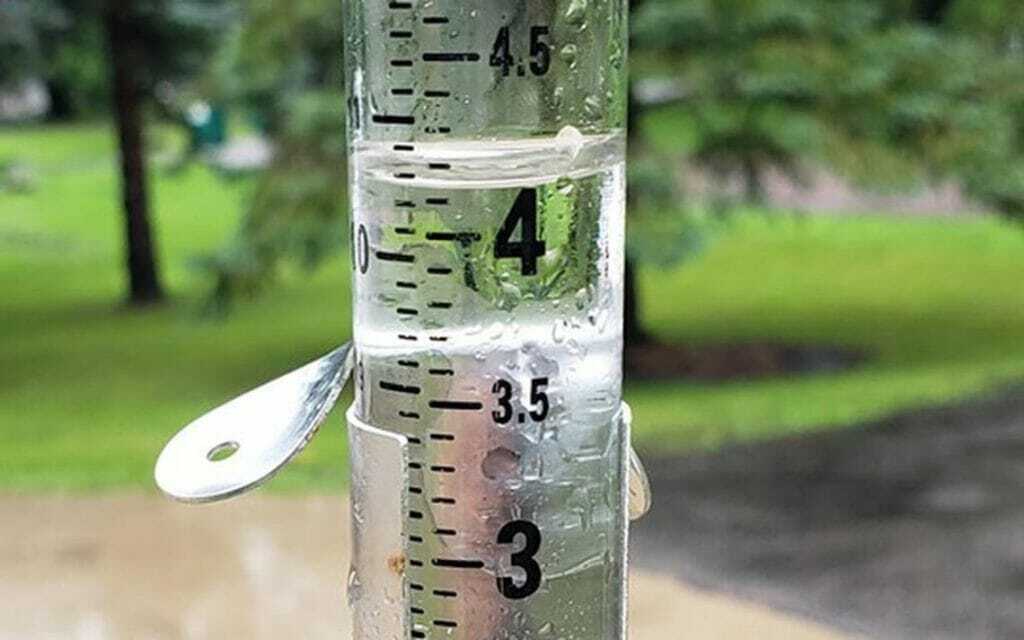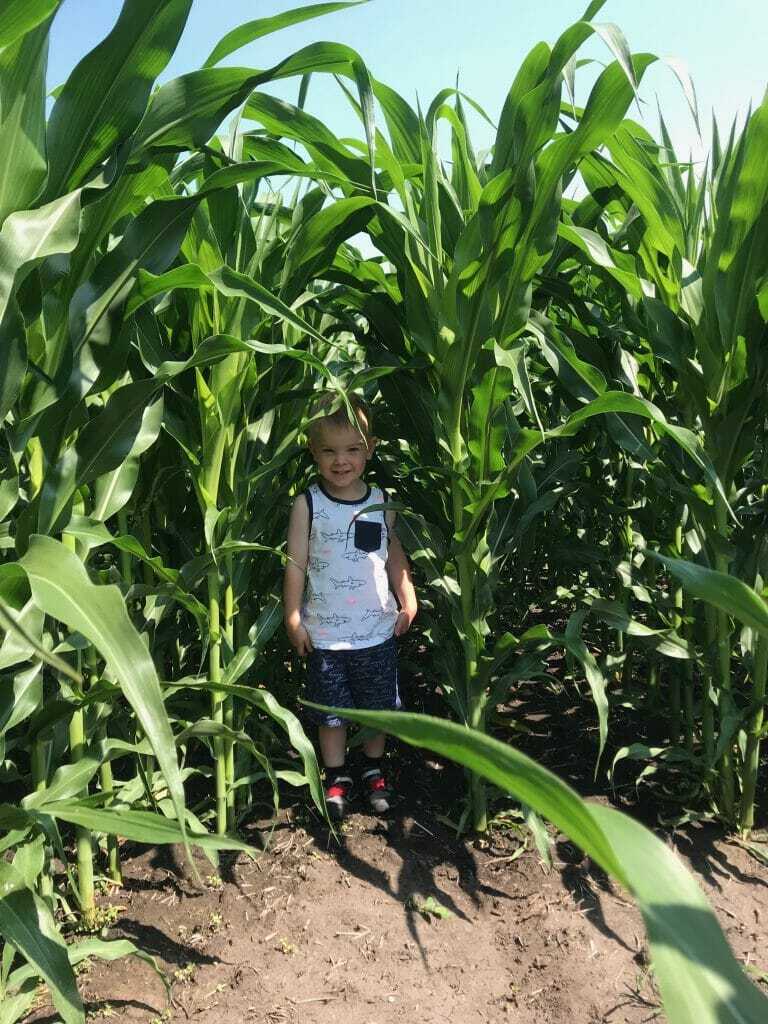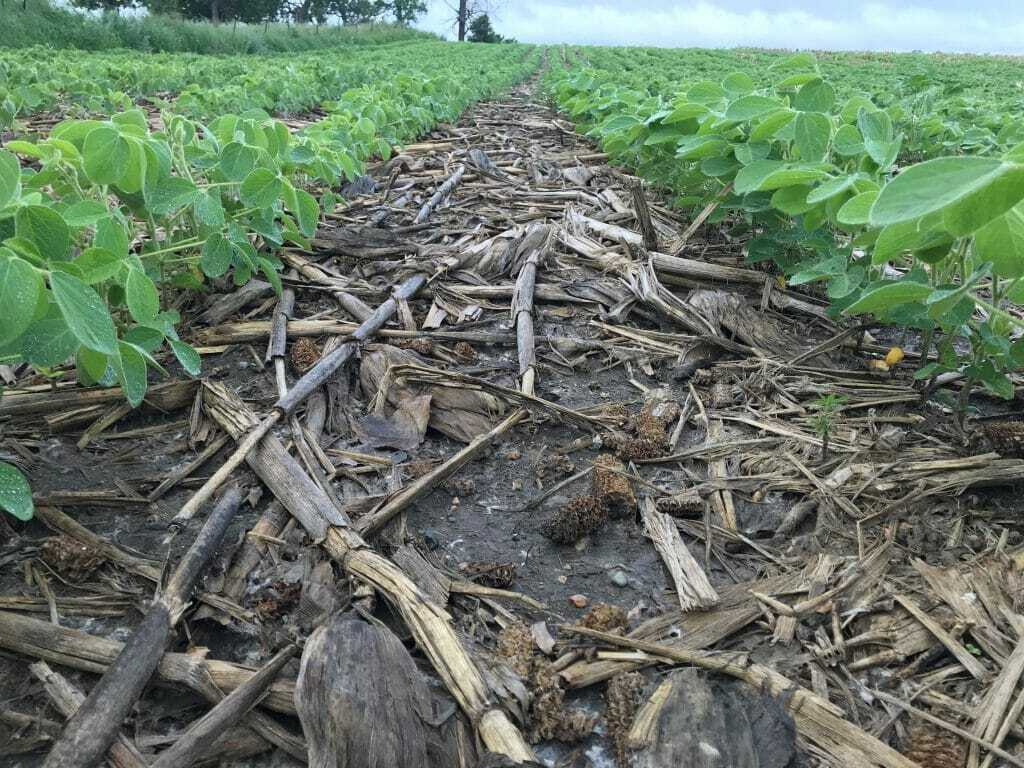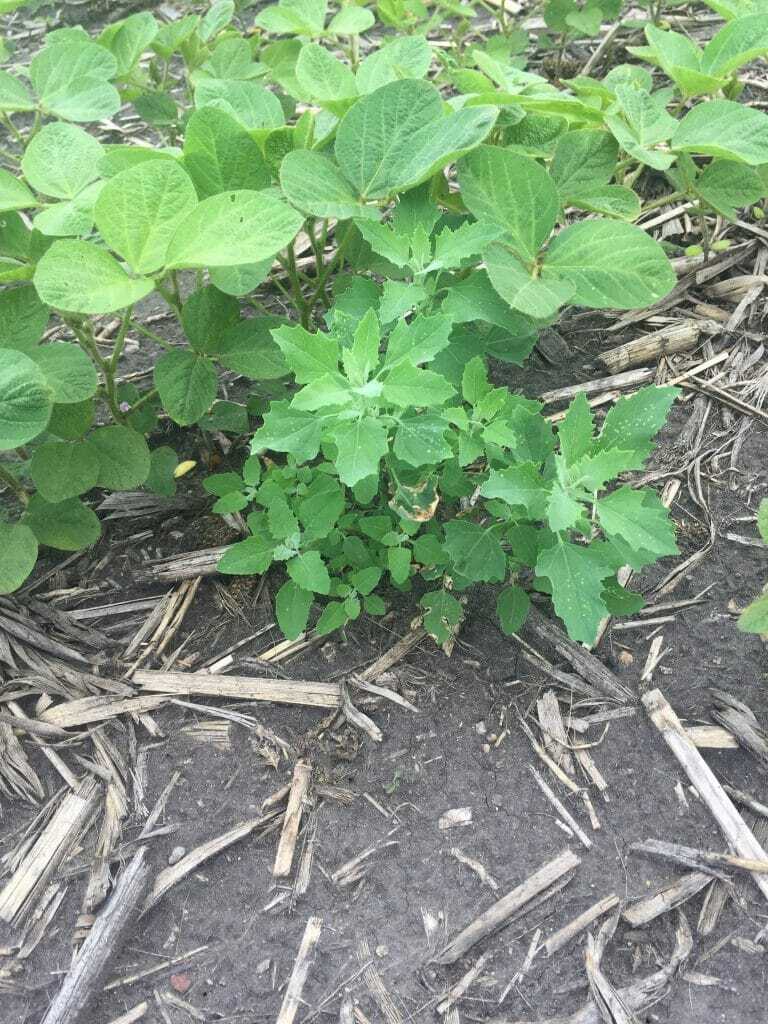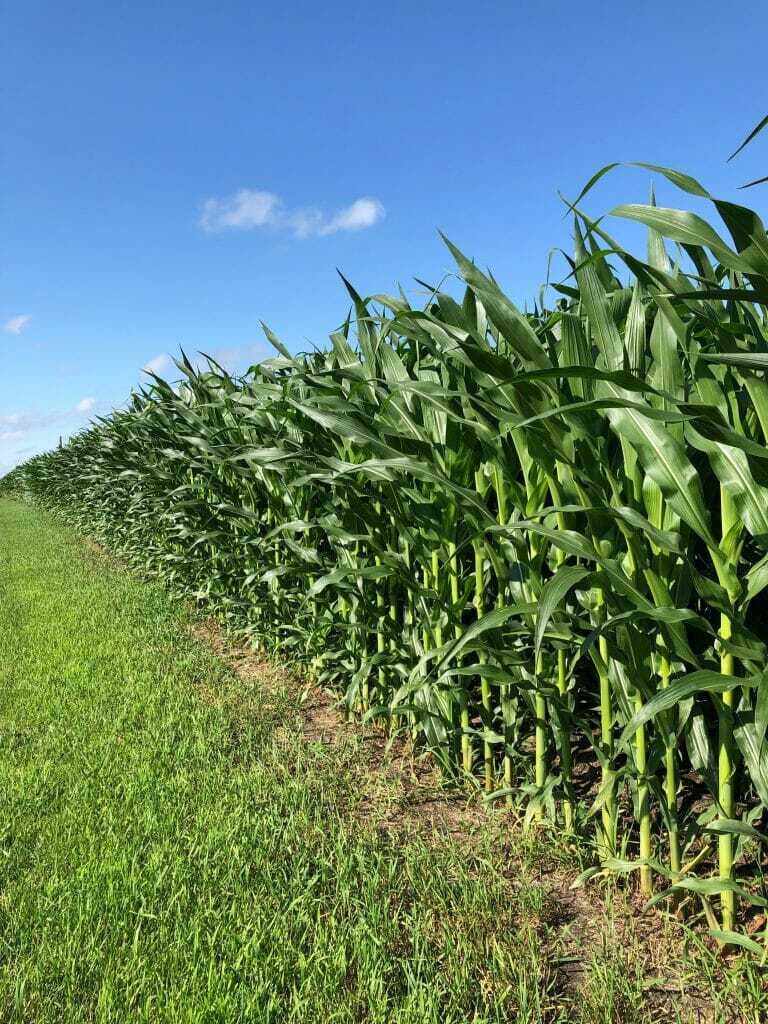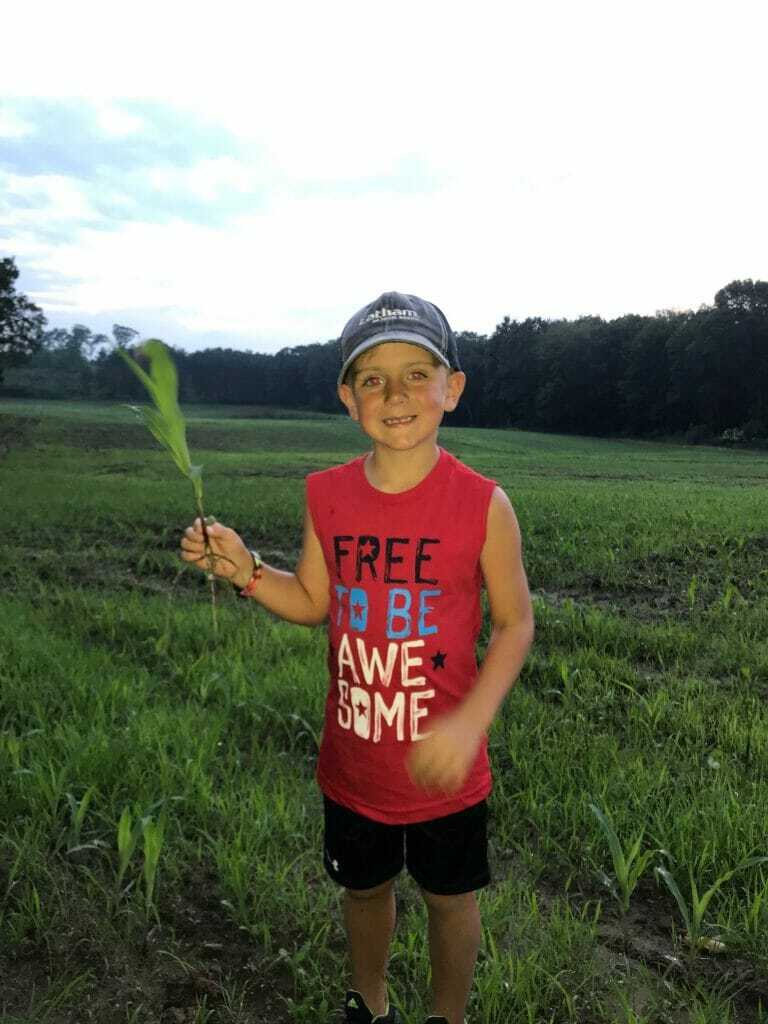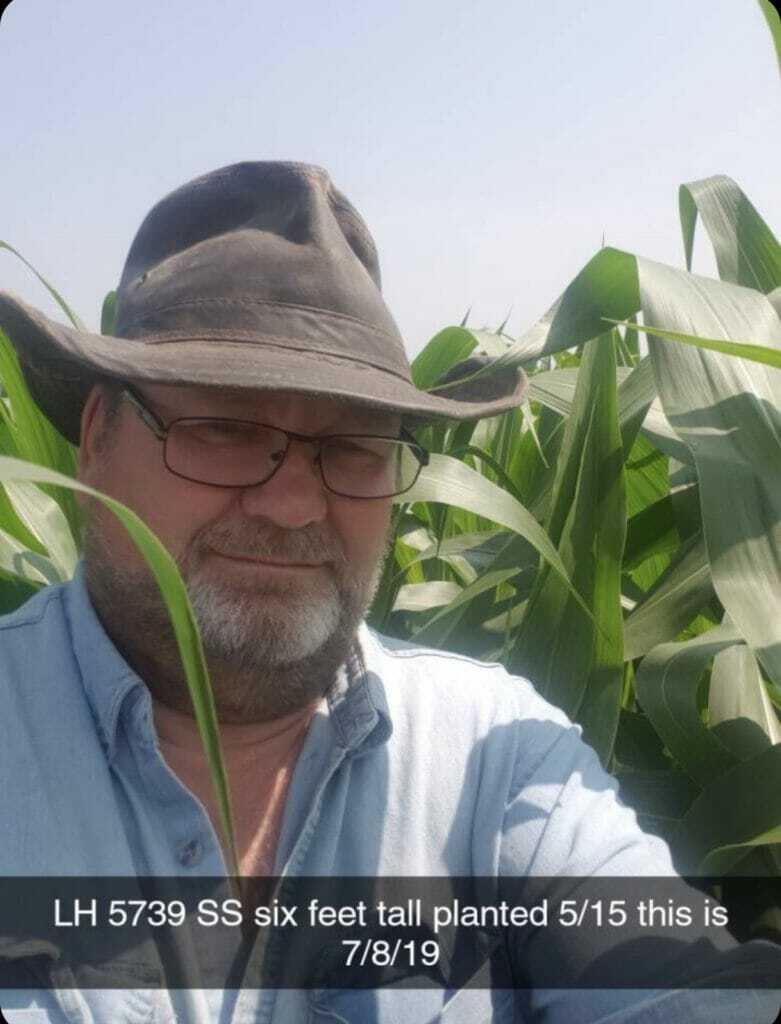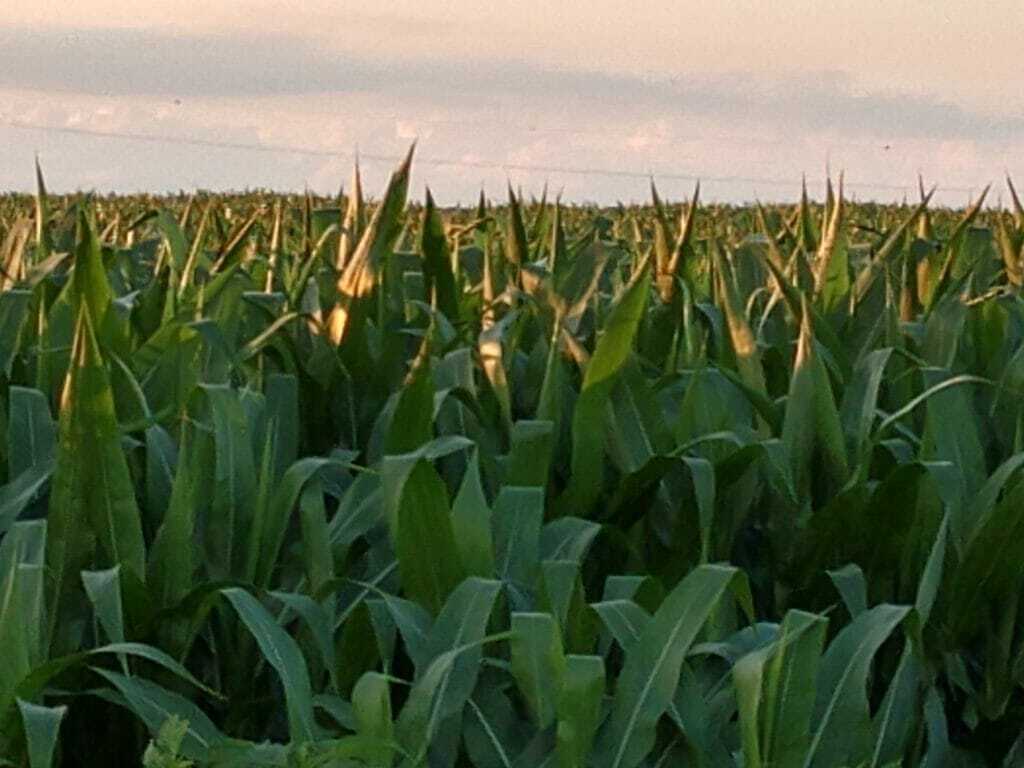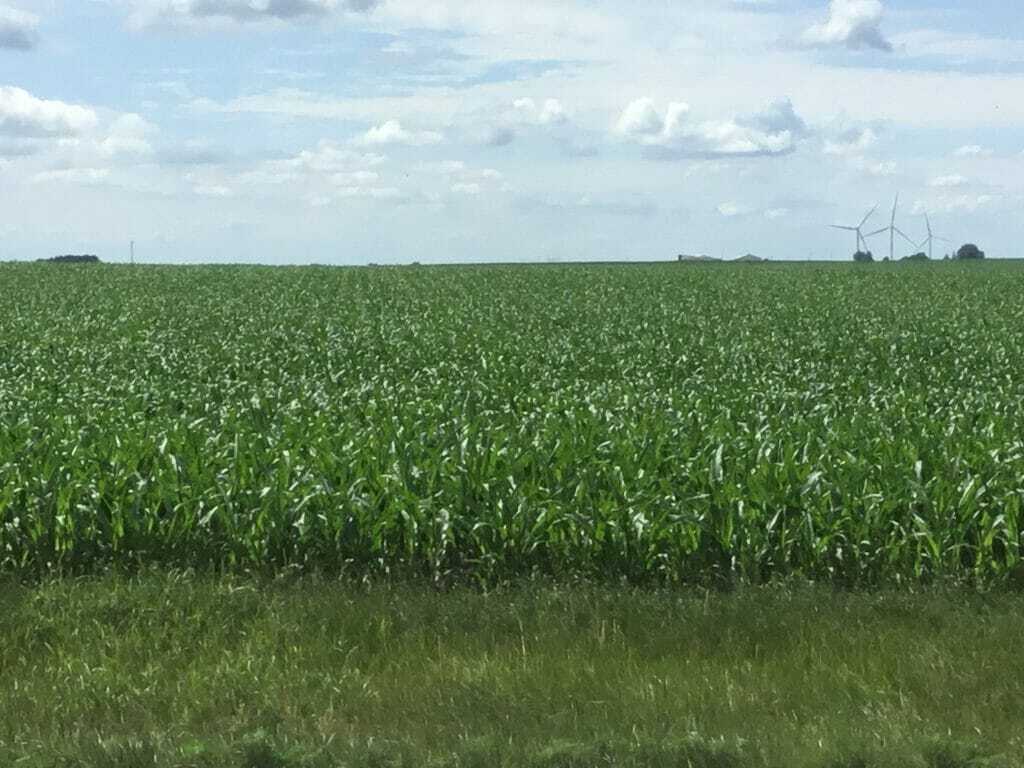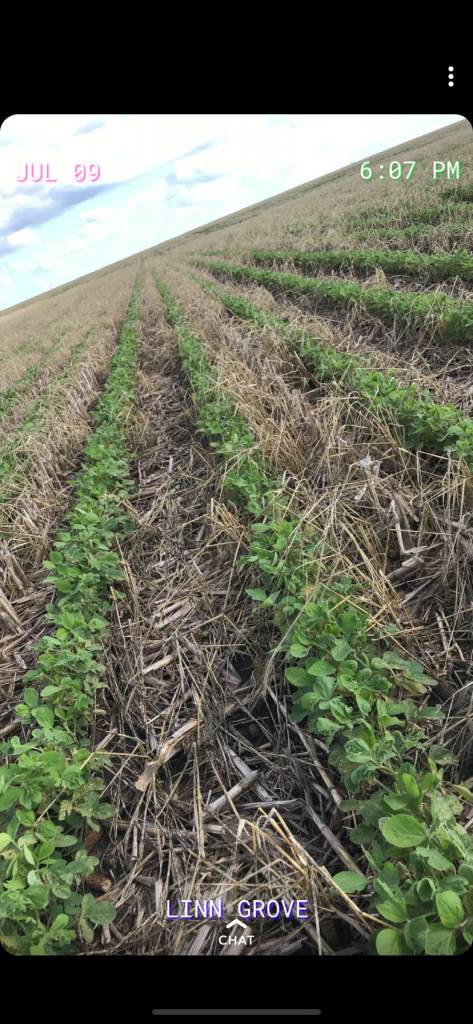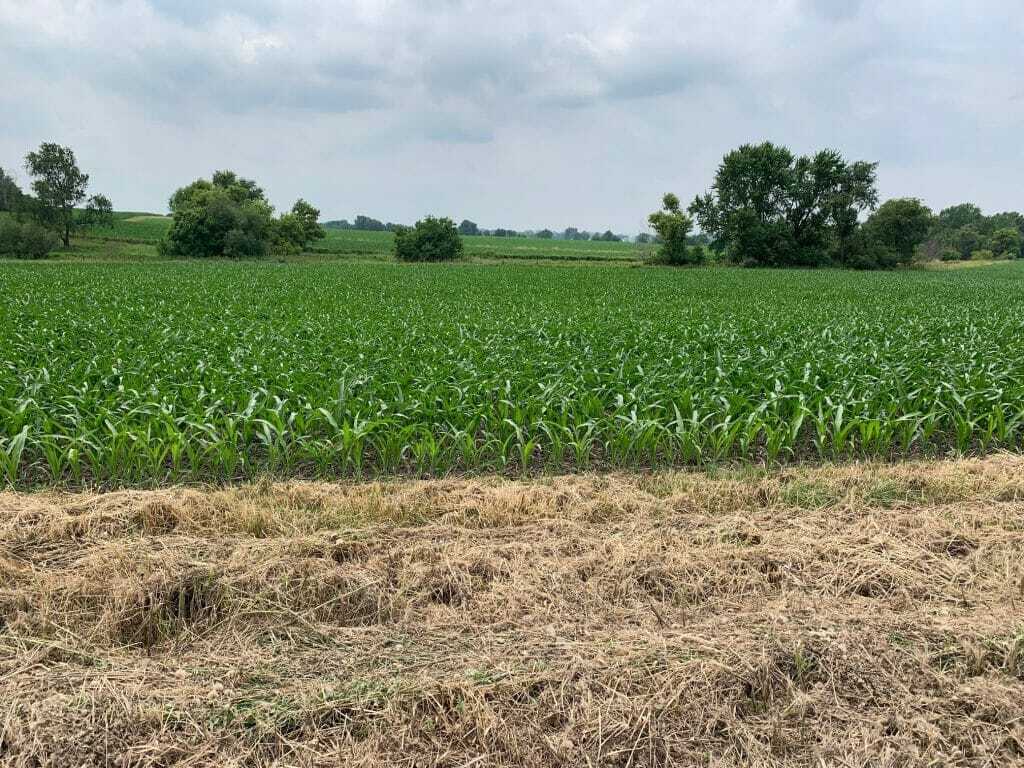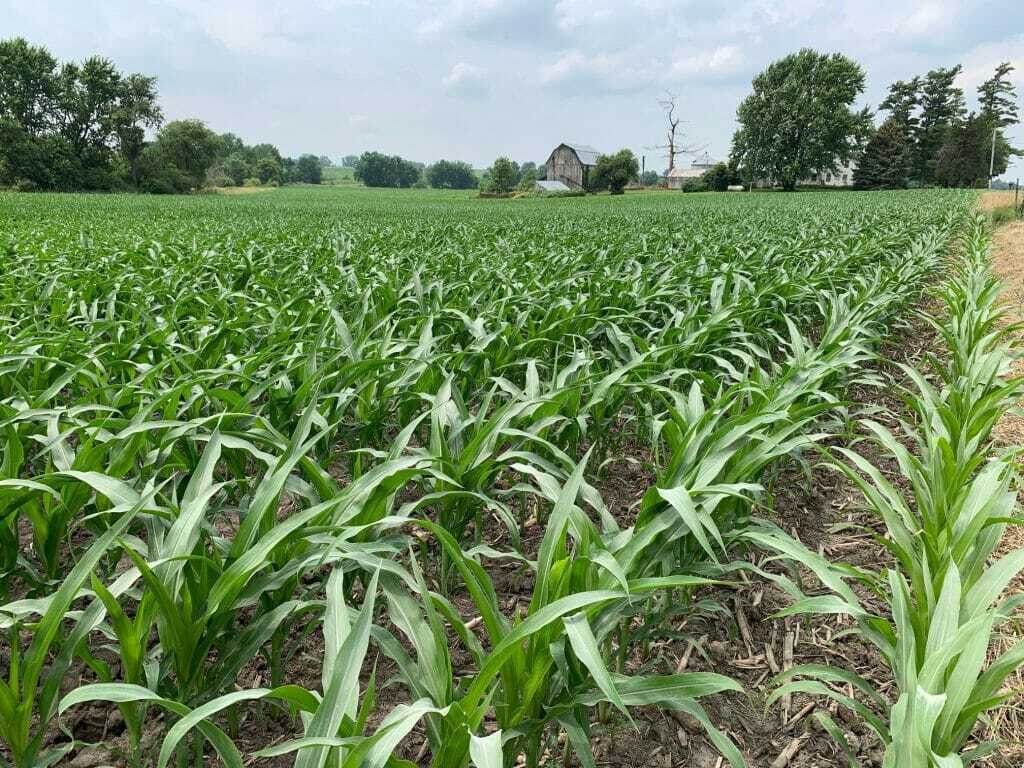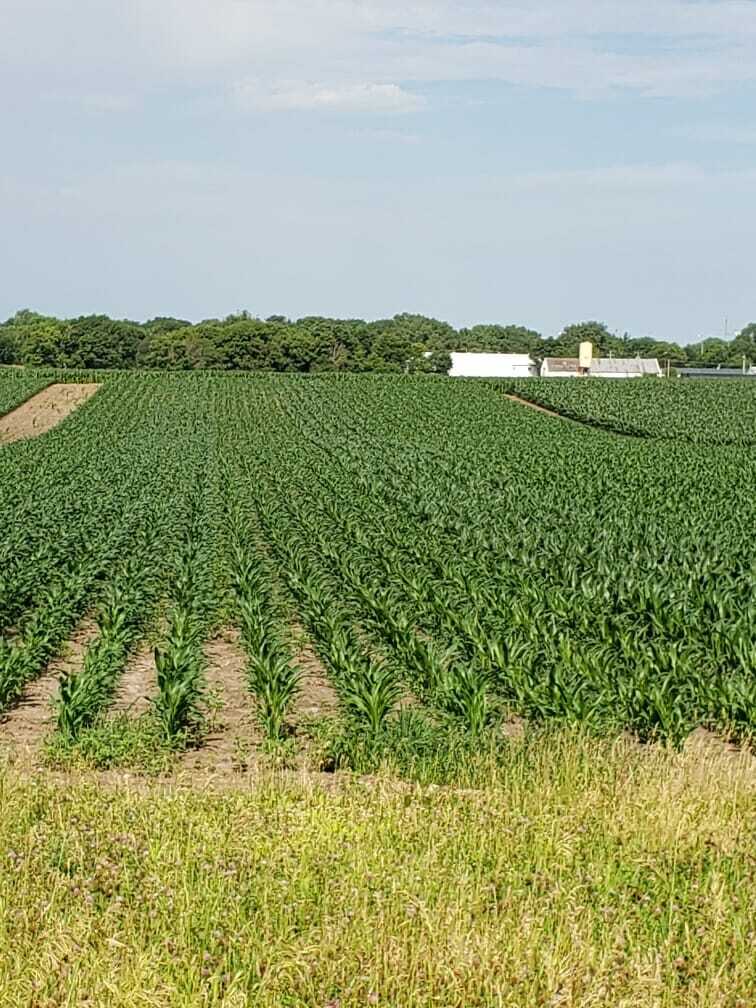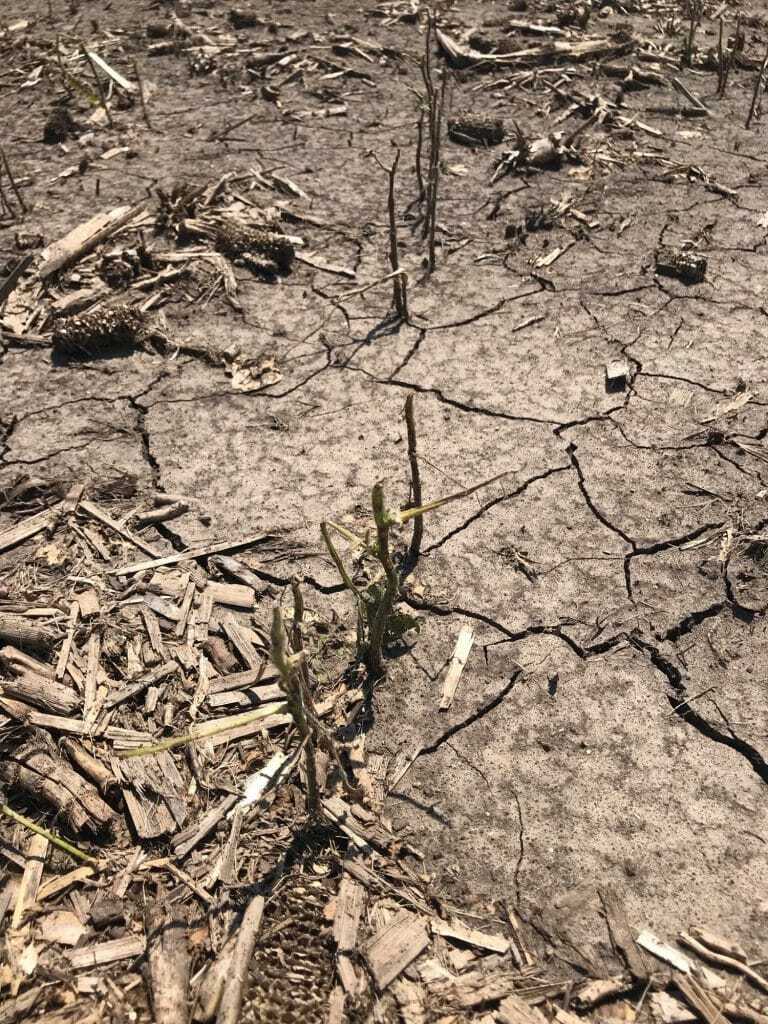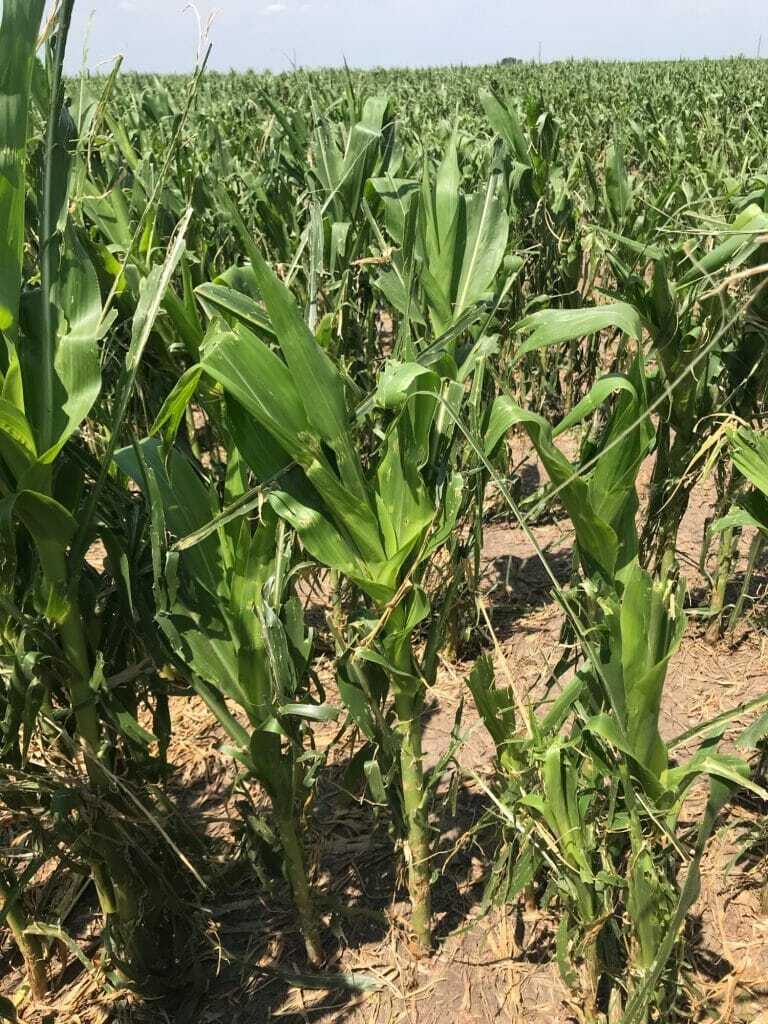Eastern North Dakota
Brian McNamee
Recent rains have been a godsend to the drought-stressed area of my region in North Dakota. The Minot area received more than 2 inches in the past 24 hours, I’ve heard reports of 4 to 6 inches north of there. The corn and soybeans have turned the corner and look great.
Areas in Central and Southeast ND have more moisture than needed. This morning I noticed extreme lodging in wheat and an alarming amount of soybeans under water. https://droughtmonitor.unl.edu/CurrentMap/StateDroughtMonitor.aspx?ND
Southeast North Dakota
Gary Geske
The corn is growing so tall that I have to keep a close eye on my little crop scout. Latham® LH 3937 VT2 PRO RIB is really stretching out with warmer weather. This is a great time for tissue testing fields. If there is a nutrient deficiency, make sure applications are made before tasseling so the plants get the most benefit.
Southeast South Dakota
Ramie Coughlin
Well, we made it! Many corn fields throughout SESD made it to knee-high by the Fourth of July. Although the norm has changed and we are used to seeing corn shoulder-high by this time of year, it still feels good to meet the goal of an old wives’ tale. Recent temperatures have been good to us. Daytime temps in the upper 80s help us accrue much needed heat units. Warm daytime combined with overnight lows below 70 have been ideal for corn growing.
They say it takes water to make water, and boy do we have water! Over the holiday weekend, many areas got 4 inches of rain. These two photos were taken just two miles apart. We are once again beyond saturated. However, as you get closer to central SD, it’s beginning to to dry up like usual. Crops there only receive 1/4” this past weekend.
Also last weekend, while sitting outside enjoy the fireworks show, I noticed fireflies. When you start seeing fireflies, it’s time to watch for rootworm. With potentially poor root systems from wet spring weather, it’s important to be proactive. Start scouting for rootworms in your corn fields.
Northeast South Dakota
James Keltgen
Although it has been hot enough in Northeast South Dakota to push along crop development, it has also been wet. More than six inches of rain has fallen during the past month. Some areas south of Watertown received that much in a short time period, cashing Highway 81 to flood.
Corn leaves are turning yellow firing as they show signs of stress from saturation. Soybeans have been stunted, as well. We’re also seeing some cutworm damaged to corn and soybeans, so make sure you’re scouting your fields.
Northern Minnesota
Ken Highness
This field of Latham® LH 0995 E-3 in Wilkin County Minnesota looks very healthy as it enters the R-1 development stage. To keep fields clean and healthy, weeds must be controlled. I’m seeing a lot of Lambsquarter as pictured here, Pigweed and winter annuals. Effective weed control requires a combination of tactics including tillage, herbicides and seed selection. Latham Hi‑Tech Seeds offers farmers choices with a full lineup of Roundup, Liberty link, Extend, LLGT27 and E-3 products. We need to be good stewards of these new traits and rotate them to prevent weed resistance.
Southern Minnesota
Justin Prokosch
Crops really took over during the last week after we received lots of sunshine and heat units. Some corn is already higher than our heads.
Northern Wisconsin
Joe Salter
The last few weeks have been pretty good in Northern Wisconsin. Pictured here is Latham® LH 4450 CNV, which planted June 21. A fair amount of the corn made it to knee high by the Fourth of July. Spraying still a challenge in our area due to rain, and some area farmers hope to get another shot of nitrogen on their crop.
Southern Wisconsin
Greg Mair
Farmers are all smiles in Southern Wisconsin after a warm week. Our crops needed some heat, and they got it! Wayne Melton of Cambridge, Wisconsin, is pictured here with Latham® LH 5739 SS RIB that was planted May 15. Given this spring weather, I don’t think he could be any happier with the health and progress of #Crop19.
North Central Iowa
Cory Greiman
This good looking field of Latham® LH 5245 VT2 PRO RIB near Burt, Iowa, has the flag leaf up and is ready to start tasseling.
Northeast Iowa
Craig Haaland
Here’s a field of LH 5249 SS in Mitchell County. After getting a slow start this spring, fields are uniform now. Farmers are finishing up spraying and crop scouting is underway. Lots of warm, humid weather with rain is creating a favorable environment for pests. Soybeans are really growing and are looking good.
Northwest Iowa
Darin Chapman
This Latham 2184 R2X, which was planted into 4-foot high cereal rye, looks to have great potential!
Eastern Iowa
Jerry Broders
I can finally say that planting is complete in Eastern Iowa. The final field of soybeans went into the ground July 8 for first time planting. We will truly get a sense of what impact planting date has on crop yields this fall. Pictured here is Latham LH 5249 SS, which was planted June 8 west of Iowa City. It’s at V9 growth stage.
Western Iowa
Larry Krapfl
These hard boxes are ready for return to Latham HQ, signaling the close of this season. A big thank you to everyone! Now it’s time to start a new seed selling year.
West North Central Iowa
Bart Peterson
Latham’s LH 5742 RR was planted June 1 in this Hardin County plot.
Central Iowa
Bryan Rohe
Weather has been variable across Central Iowa. State Center saw destructive hail. Areas of Boone received 12 inches of rain within 48 to 72 hours. Where weather events haven’t struck the crops look pretty good. This week the early corn is tasseling. Early to mid-May soybeans are starting to flower.

